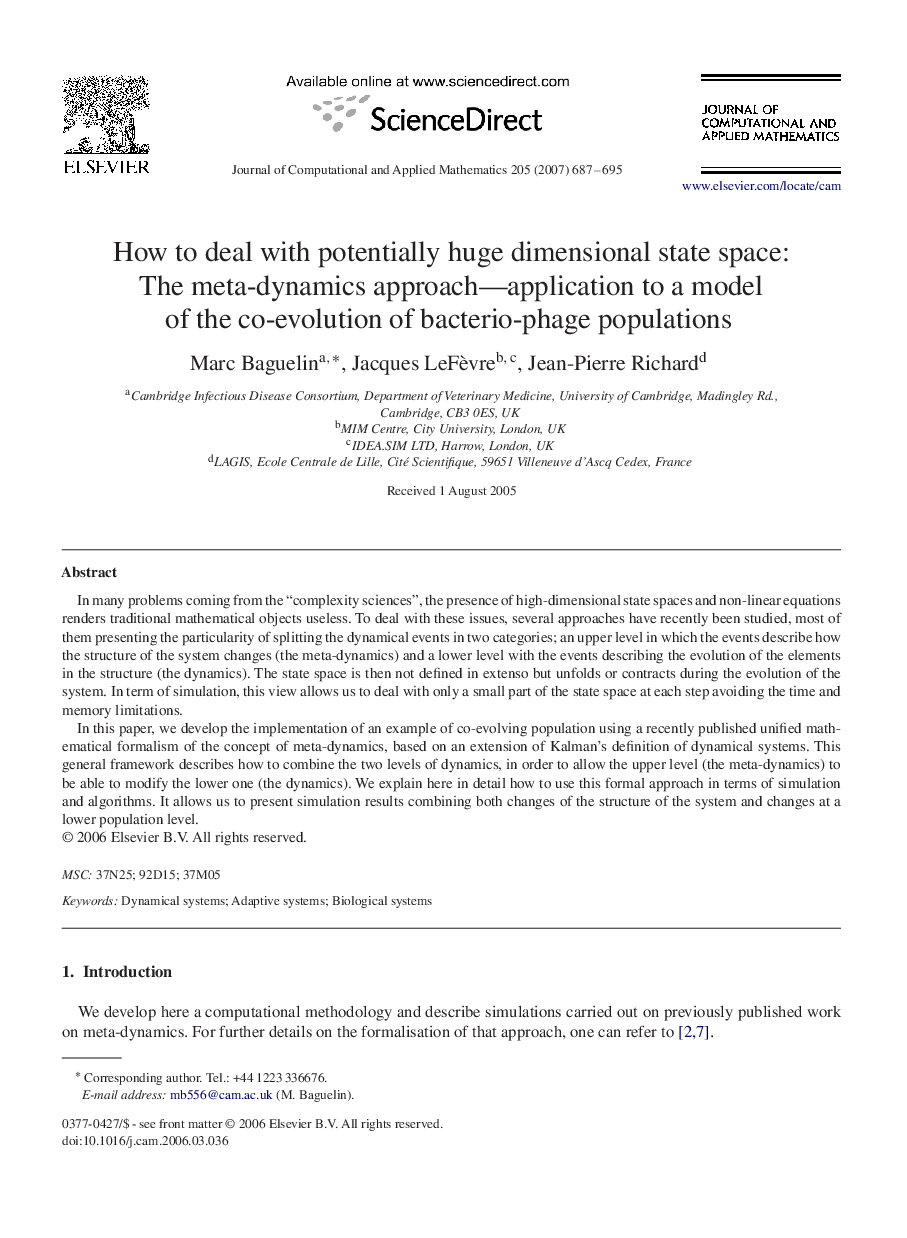| Article ID | Journal | Published Year | Pages | File Type |
|---|---|---|---|---|
| 4642468 | Journal of Computational and Applied Mathematics | 2007 | 9 Pages |
In many problems coming from the “complexity sciences”, the presence of high-dimensional state spaces and non-linear equations renders traditional mathematical objects useless. To deal with these issues, several approaches have recently been studied, most of them presenting the particularity of splitting the dynamical events in two categories; an upper level in which the events describe how the structure of the system changes (the meta-dynamics) and a lower level with the events describing the evolution of the elements in the structure (the dynamics). The state space is then not defined in extenso but unfolds or contracts during the evolution of the system. In term of simulation, this view allows us to deal with only a small part of the state space at each step avoiding the time and memory limitations.In this paper, we develop the implementation of an example of co-evolving population using a recently published unified mathematical formalism of the concept of meta-dynamics, based on an extension of Kalman's definition of dynamical systems. This general framework describes how to combine the two levels of dynamics, in order to allow the upper level (the meta-dynamics) to be able to modify the lower one (the dynamics). We explain here in detail how to use this formal approach in terms of simulation and algorithms. It allows us to present simulation results combining both changes of the structure of the system and changes at a lower population level.
